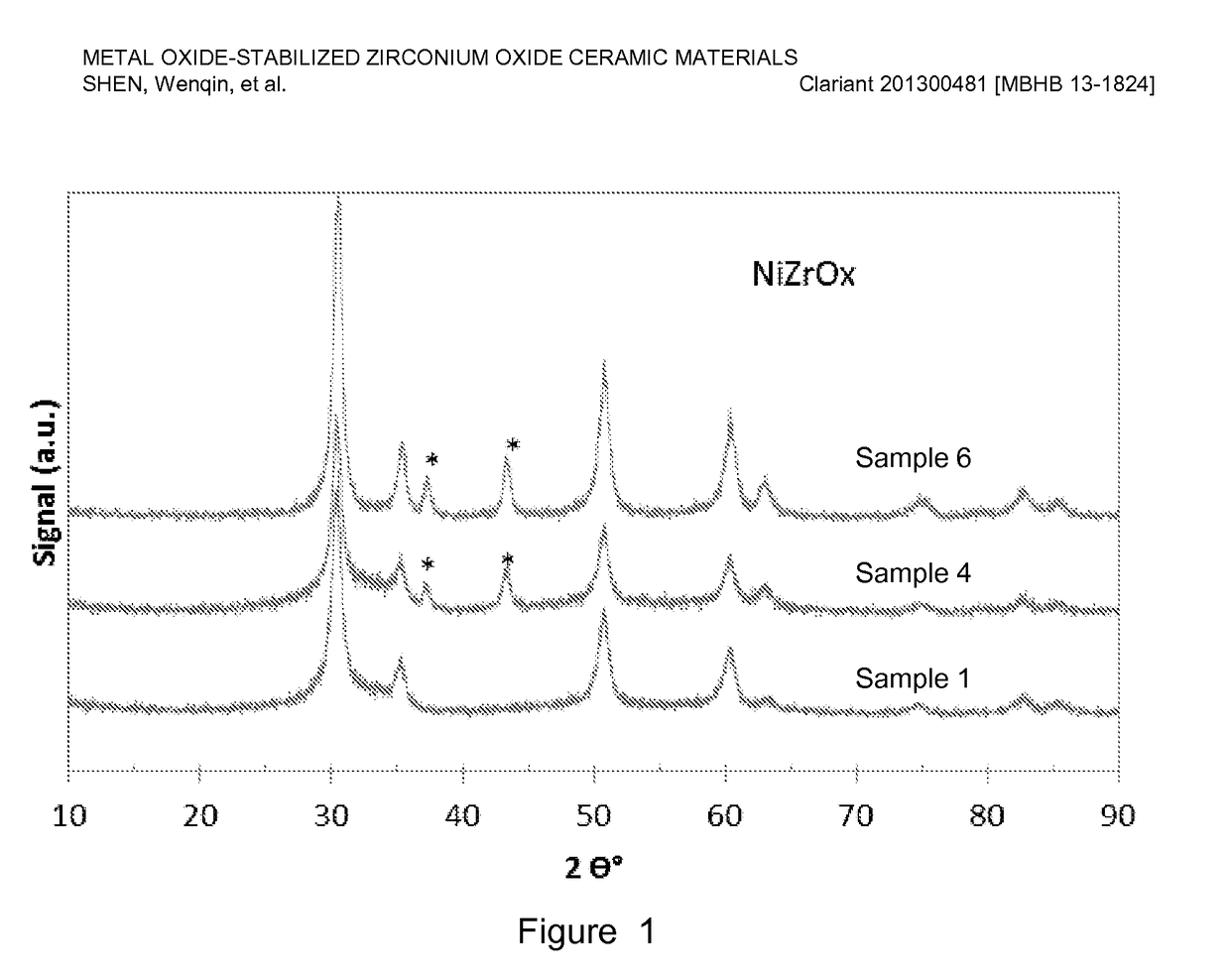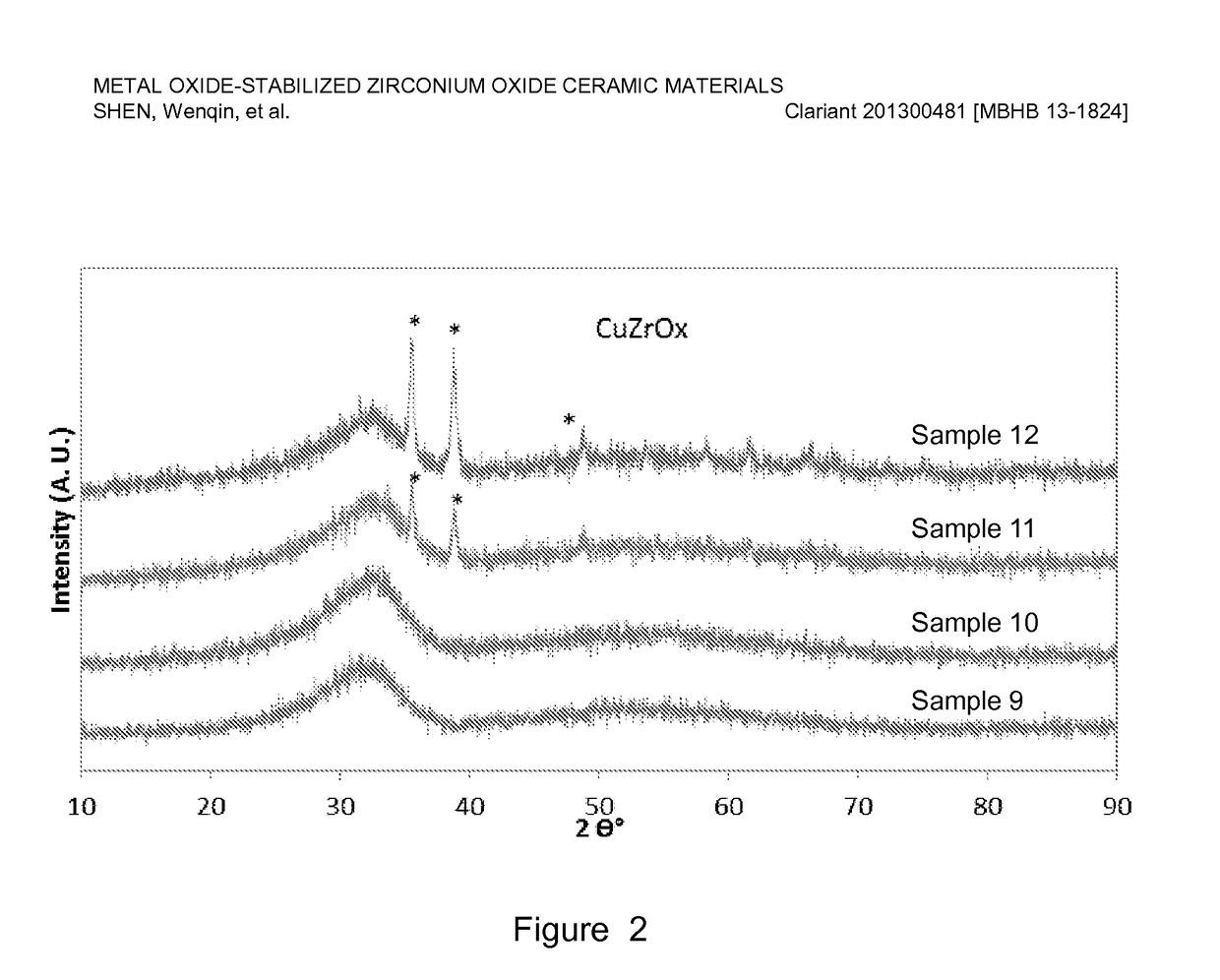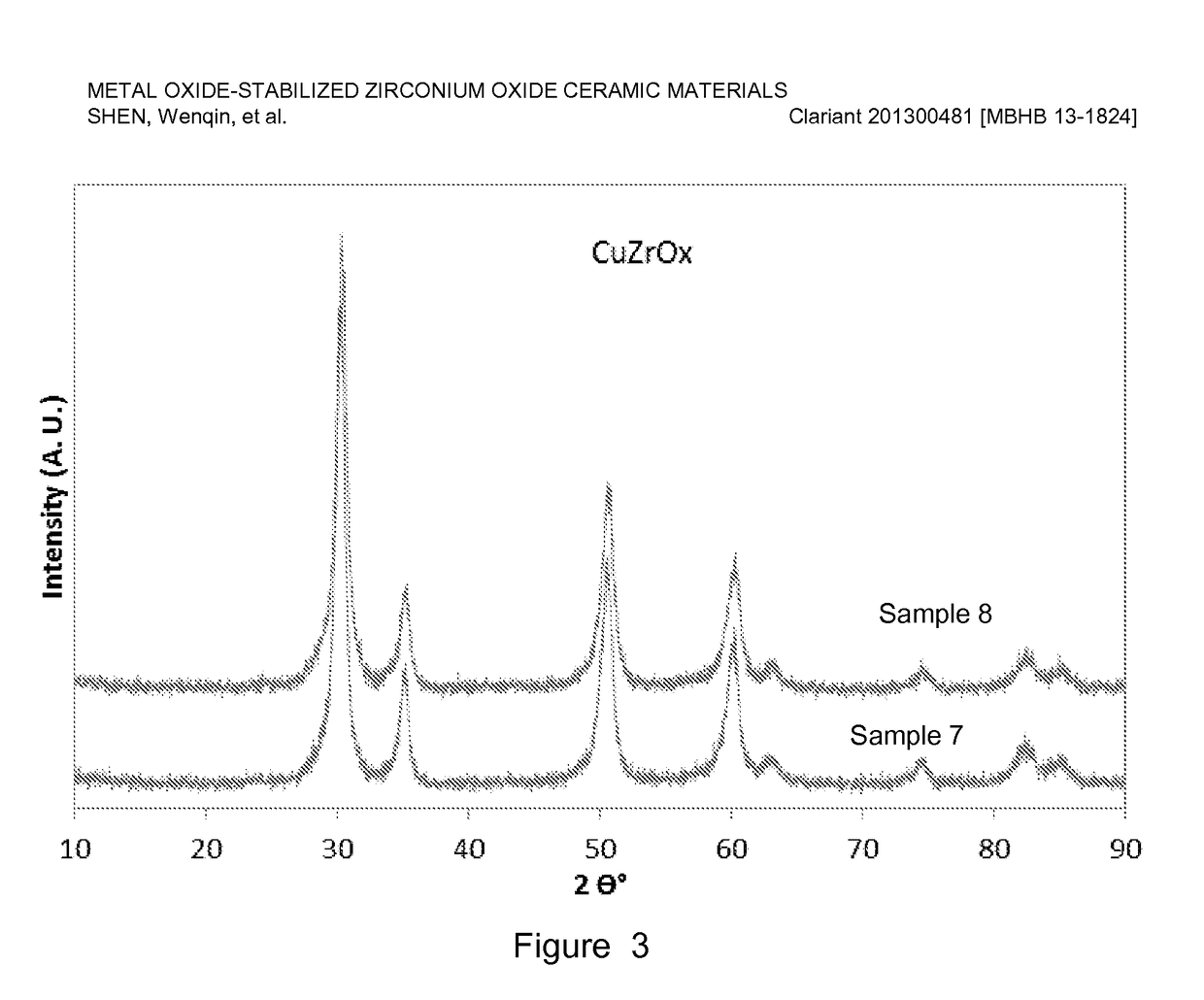Metal Oxide-Stabilized Zirconium Oxide Ceramic Materials
a ceramic material and metal oxide technology, applied in the field of ceramic materials, can solve the problems of limiting the application of zirconium oxide as a supporting material for heterogeneous catalysts, and reducing the strength and durability of zirconium oxide, so as to achieve the effect of improving catalytic performance and easy extrusion
- Summary
- Abstract
- Description
- Claims
- Application Information
AI Technical Summary
Benefits of technology
Problems solved by technology
Method used
Image
Examples
example 1
abilized Zirconium Oxide Materials
[0075]Nickel-stabilized zirconium oxide materials were prepared by co-precipitation of a nickel nitrate (Ni(NO3)2) and zirconyl nitrate (ZrO(NO3)2) precursor solution using a sodium hydroxide solution. For a typical preparation, Sample 6 of Table 1 below as an example, 550 g nickel nitrate solution (13.8 wt. % nickel on metal basis) was premixed with 1665 g zirconyl nitrate solution (equivalent to 20 wt. % zirconium oxide) and precipitated with a 25 wt. % NaOH solution. The precipitation was conducted at a constant pH ranging from 6-10, typically, 8-9 at room temperature with vigorous stirring. The precipitate was aged overnight (about 16 h) and washed with excess de-ionized water until the conductivity of the final filtered water was less than 0.4 mS / cm. The precipitate was dried accordingly and the resulting material was extruded using an auger extruder. The extrudates were dried at 110° C. for 3 h, followed by calcination at a temperature ranging...
example 2
abilized Zirconium Oxide Materials
[0078]Copper-stabilized zirconium oxide materials were prepared by co-precipitation of a copper nitrate and zirconyl nitrate precursor solution using a sodium hydroxide solution. For a typical preparation, Sample 10 as an example, 467 g copper nitrate (Cu(NO3)2) solution (15.5 wt. % Cu on metal basis) was premixed with 1169 g zirconyl nitrate solution (equivalent to 20 wt. % ZrO2) and precipitated with a 25 wt. % NaOH solution. The precipitation was conducted at a constant pH ranging from 6-10, typically, 8-9 at room temperature with vigorous stirring. The precipitate was aged overnight (about 16 h) and washed with excess de-ionized water until the conductivity of the final filtered water was less than 0.4 mS / cm. The cake was dried, and the resulting dried material was extruded using an auger extruder. The extrudates were dried at 110° C. for 3 h, followed by calcination at a temperature ranging from 400-600° C. for 2-5 h.
[0079]Table 2 lists six of ...
example 3
abilized Zirconium Oxide Materials
[0081]Cobalt-stabilized zirconium oxide materials were prepared by precipitation of a cobalt nitrate hexahydrate and zirconyl nitrate mixed precursor solution using a sodium hydroxide solution. For a typical preparation (i.e., the preparation of Samples 13 and 14), 120 g Co(NO3)2.6H2O was premixed with 1040 g zirconyl nitrate solution (20 wt. % ZrO2) and precipitated with a 25 wt. % NaOH solution. The precipitation was conducted at a constant pH ranging from 6-10, typically, 8-9 at room temperature with vigorous stirring. The precipitate was aged overnight (about 16 h) and washed with excess de-ionized water until the conductivity of the final filtered water was less than 0.4 mS / cm. Then, the cake was dried appropriately. The resulting dried material was extruded using an auger extruder. The extrudates so-formed were dried at 110° C. for 3 h, followed by calcination at a temperature ranging from 400-600° C. for 2-5 h.
[0082]Table 3 lists two such pre...
PUM
| Property | Measurement | Unit |
|---|---|---|
| pressure | aaaaa | aaaaa |
| temperature | aaaaa | aaaaa |
| pressure | aaaaa | aaaaa |
Abstract
Description
Claims
Application Information
 Login to View More
Login to View More - R&D
- Intellectual Property
- Life Sciences
- Materials
- Tech Scout
- Unparalleled Data Quality
- Higher Quality Content
- 60% Fewer Hallucinations
Browse by: Latest US Patents, China's latest patents, Technical Efficacy Thesaurus, Application Domain, Technology Topic, Popular Technical Reports.
© 2025 PatSnap. All rights reserved.Legal|Privacy policy|Modern Slavery Act Transparency Statement|Sitemap|About US| Contact US: help@patsnap.com



